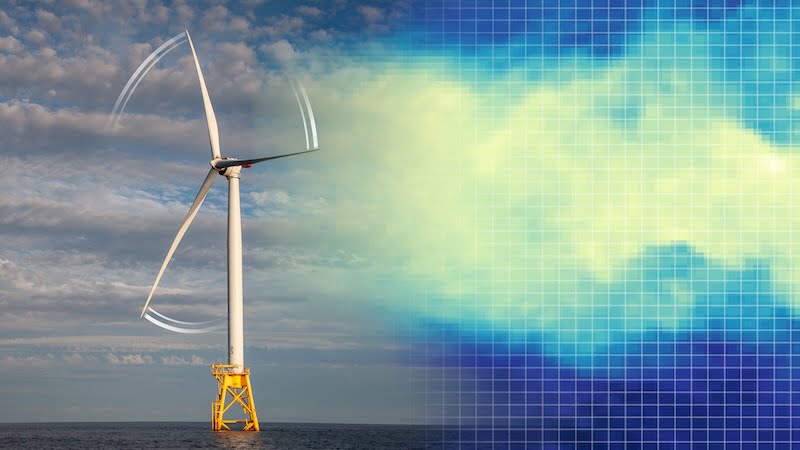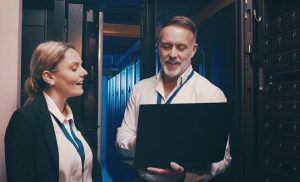
A new approach by engineers at the Massachusetts Institute of Technology (MIT) could fundamentally change the design and operation of wind farms. They have refuted an ancient mathematical theory that still forms the basis for the development of wind turbines and wind parks.ks has presented.
The blades of wind turbines and propellers are based on aerodynamic principles. These were described mathematically over a hundred years ago. However, many engineers have realized that these ancient formulas do not always work and have adapted them accordingly.
Engineers at the Massachusetts Institute of Technology (MIT) have now developed a physical model that accurately reproduces the airflow of wind turbine rotors – even under extreme conditions. This theory could not only fundamentally change the way rotors and wind farms are designed, but also significantly improve them.
Wind turbines: New theory could revolutionise energy industry
“We have developed a new theory for the aerodynamics of rotors,” says Michael Howland of MIT. This approach makes it possible to determine the forces, flow speeds and performance of a rotor – even regardless of whether it generates energy or supplies it, as in the case of a propeller.
The new theory is a fundamental mathematical model that could be partially applied directly. The approach can optimize individual parameters such as the orientation of turbines as well as their rotation speed and angle in order to increase performance and safety.
“That’s what we’re so excited about because it has immediate and direct potential to impact the entire wind energy value chain,” Howland said.
Researchers refute impulse theory
The so-called momentum theory previously described the interaction between rotors and their environment. It was developed at the end of the 19th century. Based on this approach, engineers have been determining the maximum performance of propellers, rotors and wind turbines for decades.
Engineer Michael Howland says: The equations of momentum theory “are the first thing you read in a wind energy textbook and the first thing I talk about in my courses when I teach about wind energy.” The background: In 1920, physicist Albert Betz used this as a basis to calculate the maximum amount of energy that could theoretically be obtained from wind. The result: the so-called Betz limit, which is 59.3 percent.
According to Howard, however, this theory would have failed in practice. Because while the Betz limit states that the force decreases above a certain angle or rotation speed, experiments have shown the opposite.
Howland and his team say they even found that intentionally and slightly misaligning some turbines can increase the overall performance of wind turbines in a wind farm. The reason: Previously, engineers had relied on the ancient momentum theory.
New model aims to make wind turbines more efficient
Instead, the MIT researchers analyzed the interaction between air flow and turbines using detailed aerodynamic models. The result: The original assumption that a drop in air pressure behind the rotor would quickly return to normal ambient pressure turned out to be wrong.
According to MIT engineers, an inaccuracy has occurred near the Betz limit. In concrete terms, this means that the maximum output of wind turbines, wind farms and rotors may be higher than previously thought. Howland says:
So we have Betz's prediction of where we should operate the turbines, and within 10 percent of that operating point, which we believe will produce maximum power, the theory becomes completely useless and doesn't work.
The researchers came to the conclusion that rotors do not always have to be aligned precisely with the air flow. The new model shows how the performance of turbines can be maximized when they are “incorrectly” aligned with the air flow. The Betz limit did not take this into account.
Wind turbines: That is why the impulse theory was incomplete
Individual turbines in wind farms drain some of the energy that would otherwise be available to neighboring turbines due to wake effects. However, according to MIT, neither operators nor manufacturers of wind farms have been able to determine how turbine performance changes under certain circumstances. Howland:
There was no theory for this. That's what we worked on here. With our theory, we can say for the first time directly and without empirical corrections how a wind turbine should be operated to maximize its performance.
The model could also be applied to propellers and hydrokinetic turbines such as tidal or river turbines, as the flow conditions are similar. The new theory is based on mathematical formulas that any provider can incorporate into their software, as it can be downloaded for free from GitHub. Howland says:
The goal of our modeling is to enable wind energy research to advance the development of wind energy capacity and reliability necessary to respond to climate change.
Also interesting:
Source: https://www.basicthinking.de/blog/2024/08/22/theorie-bricht-zusammen-funktionieren-windraeder-bald-ganz-anders/


